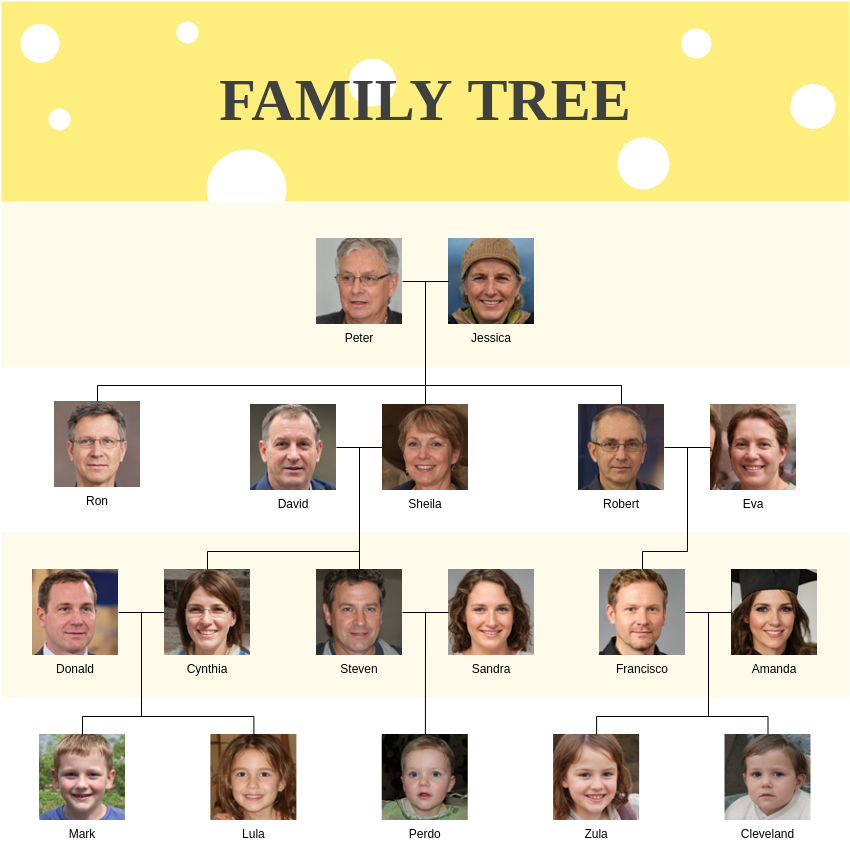How to Describe a Family-tree
Hello Friends...
Sure, we all are doing well... Be careful, we must stay fit and shouldn't fall ill getting our studies affected. We shall eat and drink healthy, exercise regularly, and won't avoid our domestic and social responsibilities. And whatever time we get for ourselves at the end of the day, we must study hard for most of the time, so that we learn to think... and learn. We simply cannot afford to stop thinking, for we are learners, and we are the chosen ones who got the scope to learn...
Let's learn to think first...
We meet this time together again to learn how to describe a family-tree.
Family-tree
A Flowchart
Now, what's a family-tree? Certainly it's not a tree as we know trees to be. It's actually a flowchart,- a sort of diagram pointing out the relations between the members of a family. The arrows, or the linking lines look like the branches of a tree, at the end of which we have the members of the family pointed out just like we have flowers or twigs or fruits at the end of the branches of a real tree:
Artistic Presentation
And many people with strong artistic skills actually draw out trees to describe the relations between the members of their family. Hence such diagrams are popularly called family-trees:
Why to Describe in Words?
Now I am quite hopeful that you have got a fair idea about how a family tree may look. However, often it happens that we cannot come up with such pictographic descriptions every time we need to describe our families. We mostly need to describe our families in words as we introduce them to our new friends. It might not be very convenient for all of us to take out our notebooks and pencils and to draw our family trees to introduce our families to our new friends. Then how do we actually describe these pictographic descriptions that we might store easily in our minds, or in some of our notebooks, and textbooks,- especially the history textbook?
Description of Family-trees
Well, it's easy and not all difficult. We need to choose our starting point though. Then we have to go up and down, or to the left and to the right in a systematic, organised manner,- that's all. We need to learn some of the kinship terms (like brothers, sisters, cousins, uncles, aunts etc.) that describe the relation between two members in the family. State verbs (be) are mostly used to describe the relations and we choose present tense to describe the living members of the family. In case of the deceased (dead) members, we may choose to use the past tense. Shall we try to describe one together?-
Hands on
Starting Point
I choose to start with Nick. You may choose to start with any other person you would like to start with.
Context
I am going to imagine myself as Nick here. I might have chosen Nick as my friend whom, alongwith his family, I am to introduce to some of my new friends. It actually depends on the context, the real life situation where you are going to introduce our family to your new friends.
The Introduction
Hi, I am Nick. Glad that you all are here. Let me introduce my family to all of you. Here's Liz, she is my sister. (I have started at the bottom of the family tree. Now I'll be moving upward.) There's my dad, Doris. They are four siblings (brothers and sisters)- Alfred, Berta, Charles and my dad. (I moved laterally along the row.) My dad is the youngest of them all. (Here comes an interesting observation,- the eldest comes at the left-most margin and the youngest comes at the right-most if they are referred to in a row. You can very well guess that the eldest will come at the top and the youngest at the bottom if they are referred to in a column.) Alfred has got three children- Joe, Heather and Barbara (I moved down from Alfred to refer to his children.). My aunt Berta is Howard's mom (I moved down again from Berta to introduce her son.). My cousins are too friendly and jolly. There are my grandparents,- Jim and June (I moved up.). You'll be glad to know them more.
Organisation
Did I leave anybody out? I don't think so. Was my introduction neat and compactly organised? That's because I moved along the linking lines without making abrupt jumps. That's a simple trick.
One more?
Why don't you try to describe a family-tree on your own? Here you have another family tree just below. Study the instructions closely and find out where you need to start from. You also need to determine whether you are going to introduce your family or somebody else's family here. The rest is easy, I assure you. Still, if you get stuck up, you're always free to consult me.




.png)
Comments
Post a Comment
Please feel free to share another perspective, suggest an upgrade, and ask for information, or about a doubt or confusion...